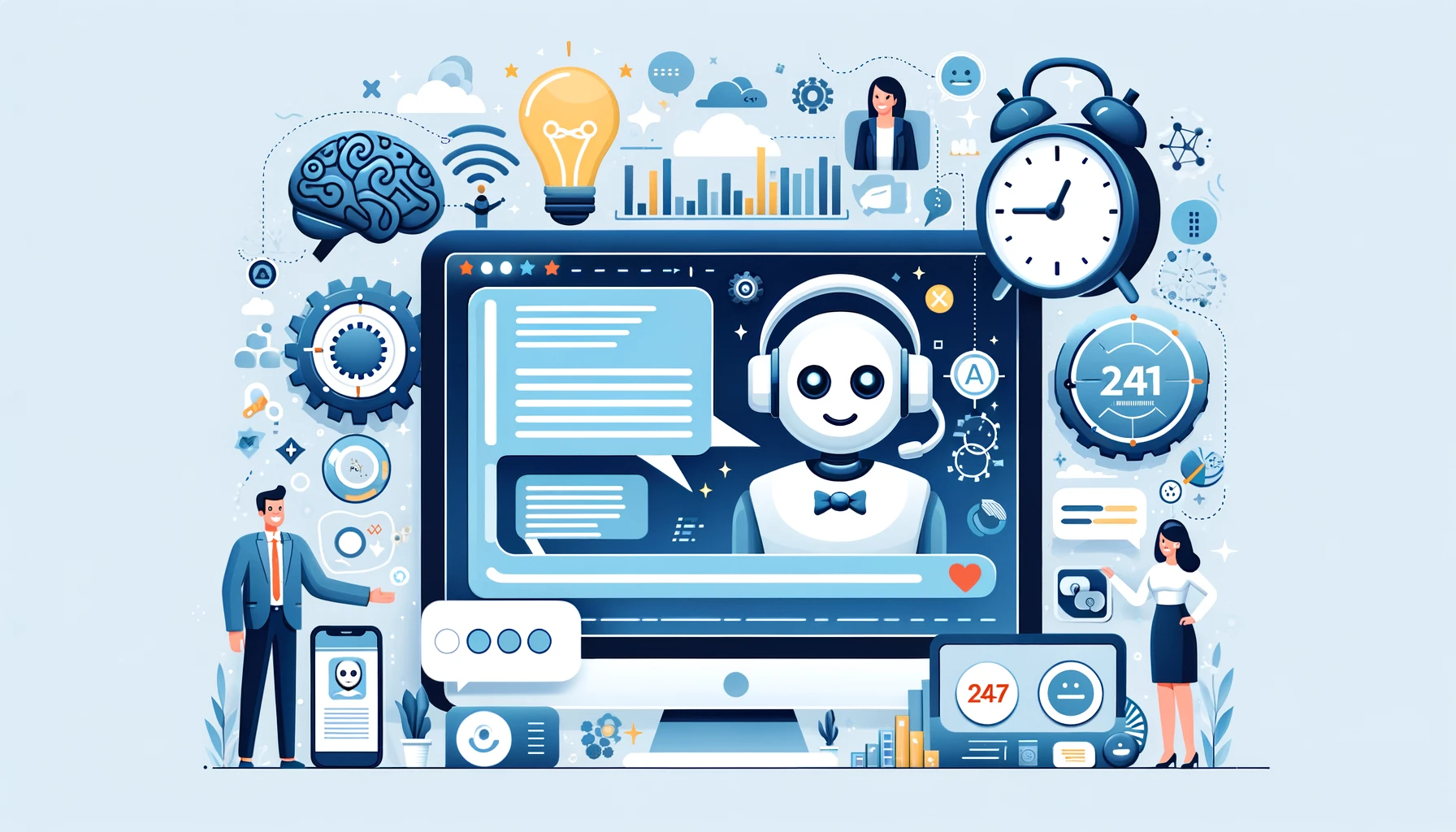
Did you know that by 2025, AI and chatbots are expected to handle 95% of customer interactions? The rise of AI and chatbots in customer service is reshaping the way businesses interact with their customers. This transformative technology offers numerous benefits, from enhanced efficiency to personalized experiences. In this post, we’ll explore the impact of chatbots and AI on customer service in digital marketing, and provide practical tips for implementation.
The Evolution of Customer Service
Traditional Customer Service
Traditional customer service methods, such as phone support and email, often come with limitations like long wait times and limited availability. These methods can be resource-intensive and may not always meet customer expectations for quick and efficient service.
Digital Transformation
The digital revolution has paved the way for innovative customer service solutions. With the advent of AI and chatbots, businesses can now offer 24/7 support, instant responses, and highly personalized interactions, transforming the customer service landscape.
Understanding Chatbots and AI
Definitions
Chatbots are software applications that simulate human conversation, enabling automated customer interactions. They can be rule-based or AI-driven, with AI-powered chatbots capable of understanding natural language and providing more sophisticated responses.
Artificial Intelligence (AI) refers to the simulation of human intelligence processes by machines, particularly computer systems. In customer service, AI is used to analyze data, understand customer queries, and deliver personalized responses.
Types of Chatbots
- Rule-Based Chatbots: Operate based on predefined rules and scripts. They are suitable for handling simple and repetitive tasks.
- AI-Driven Chatbots: Use natural language processing (NLP) and machine learning to understand and respond to complex queries. They improve over time as they learn from interactions.
AI Capabilities
AI enhances customer service by:
- Understanding Queries: Using NLP to interpret and respond to customer inquiries accurately.
- Personalization: Analyzing customer data to provide tailored recommendations and solutions.
- Data Analysis: Leveraging data analytics to gain insights into customer behavior and preferences.
Benefits of Using Chatbots and AI in Customer Service
24/7 Availability
Chatbots provide round-the-clock support, ensuring that customers receive assistance at any time, enhancing satisfaction and loyalty.
Efficiency and Speed
AI can quickly resolve customer issues, leading to faster response times and improved efficiency in handling large volumes of inquiries.
Cost-Effectiveness
Implementing chatbots reduces the need for a large customer service team, resulting in significant cost savings for businesses.
Personalization
AI enables businesses to offer personalized experiences by analyzing customer interactions and preferences, leading to more meaningful and relevant engagements.
Implementing Chatbots and AI in Digital Marketing
Getting Started
- Identify Needs: Assess your customer service needs and identify areas where chatbots and AI can make the most impact.
- Set Goals: Define clear objectives for implementing chatbots and AI, such as improving response times or enhancing customer satisfaction.
Choosing the Right Platform
Select a chatbot and AI platform that aligns with your business requirements. Consider factors like ease of integration, scalability, and available features.
Integration
Integrate chatbots with your existing digital marketing tools and platforms, such as CRM systems and social media channels, to streamline operations and ensure seamless customer interactions.
Training and Maintenance
Regularly train your AI models to ensure they remain effective and accurate. Continuously monitor and update your chatbots to address any issues and improve performance.
Case Studies and Success Stories
Real-World Examples
- Sephora: Implemented a chatbot on Facebook Messenger to offer personalized product recommendations and beauty tips, resulting in increased engagement and sales.
- H&M: Uses an AI-driven chatbot to assist customers with product searches and styling advice, enhancing the shopping experience.
Results and Impact
These businesses have seen significant improvements in customer satisfaction, efficiency, and overall engagement, demonstrating the transformative potential of chatbots and AI in customer service.
Challenges and Considerations
Common Challenges
- Integration Issues: Ensuring seamless integration with existing systems can be complex.
- Customer Acceptance: Some customers may prefer human interaction over automated responses.
- Data Privacy: Ensuring customer data is protected and used ethically.
Solutions and Best Practices
- Choose the Right Technology: Select platforms that offer robust integration capabilities and prioritize data security.
- Educate Customers: Communicate the benefits of chatbots and AI to your customers to gain their acceptance.
- Regular Updates: Continuously update and improve your chatbots to keep up with customer expectations and technological advancements.
Recap
Chatbots and AI are revolutionizing customer service in digital marketing by providing 24/7 support, enhancing efficiency, and delivering personalized experiences. Businesses can start by assessing their needs, choosing the right platforms, and integrating these technologies into their existing systems. Regular training and maintenance are crucial for ensuring optimal performance.
FAQs
- What are chatbots?
- Chatbots are software applications that simulate human conversation, enabling automated customer interactions.
- How can AI improve customer service?
- AI can enhance customer service by providing quick, personalized responses and analyzing customer data for better insights.
- What are the benefits of using chatbots in customer service?
- Benefits include 24/7 availability, increased efficiency, cost savings, and personalized customer experiences.

